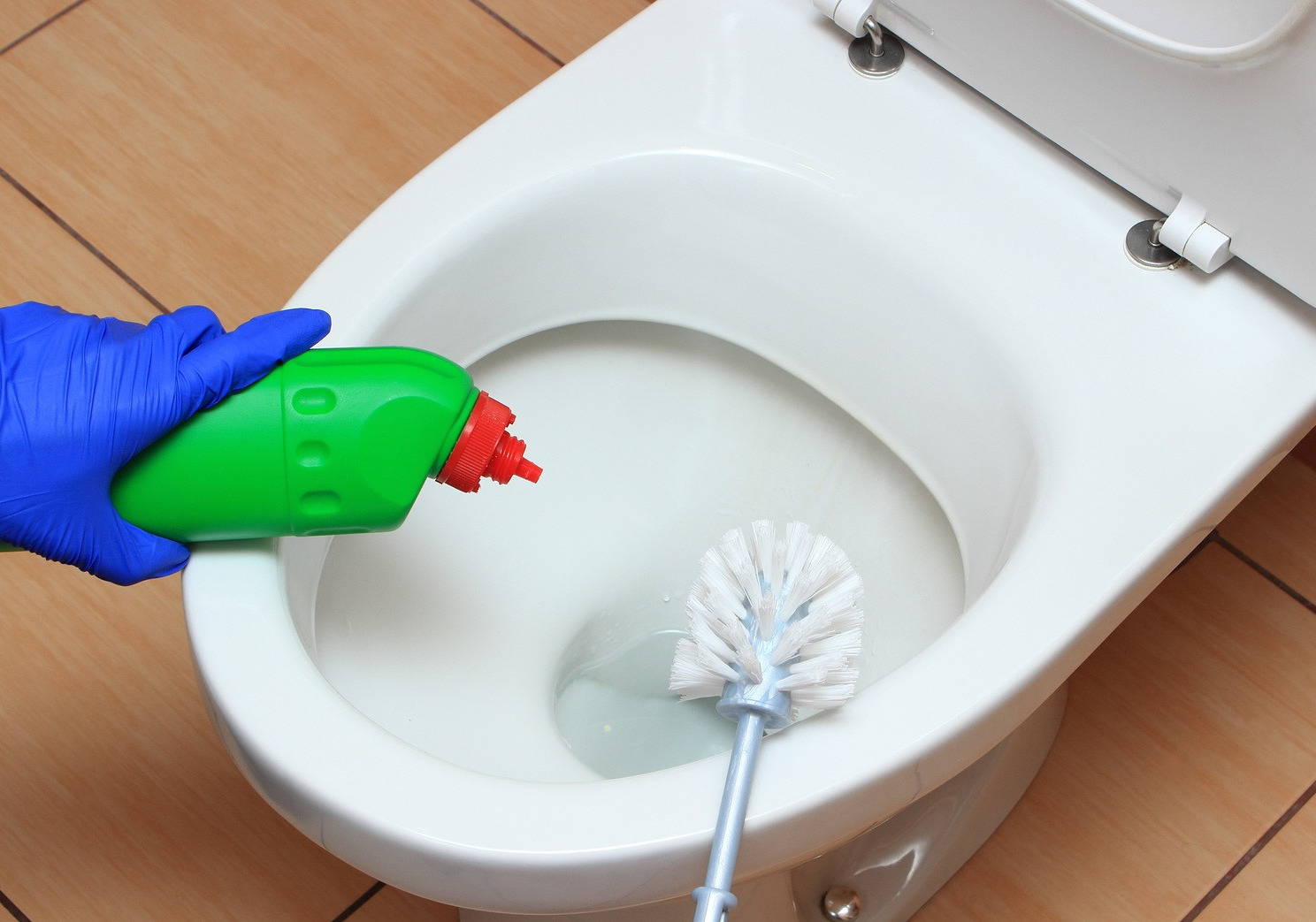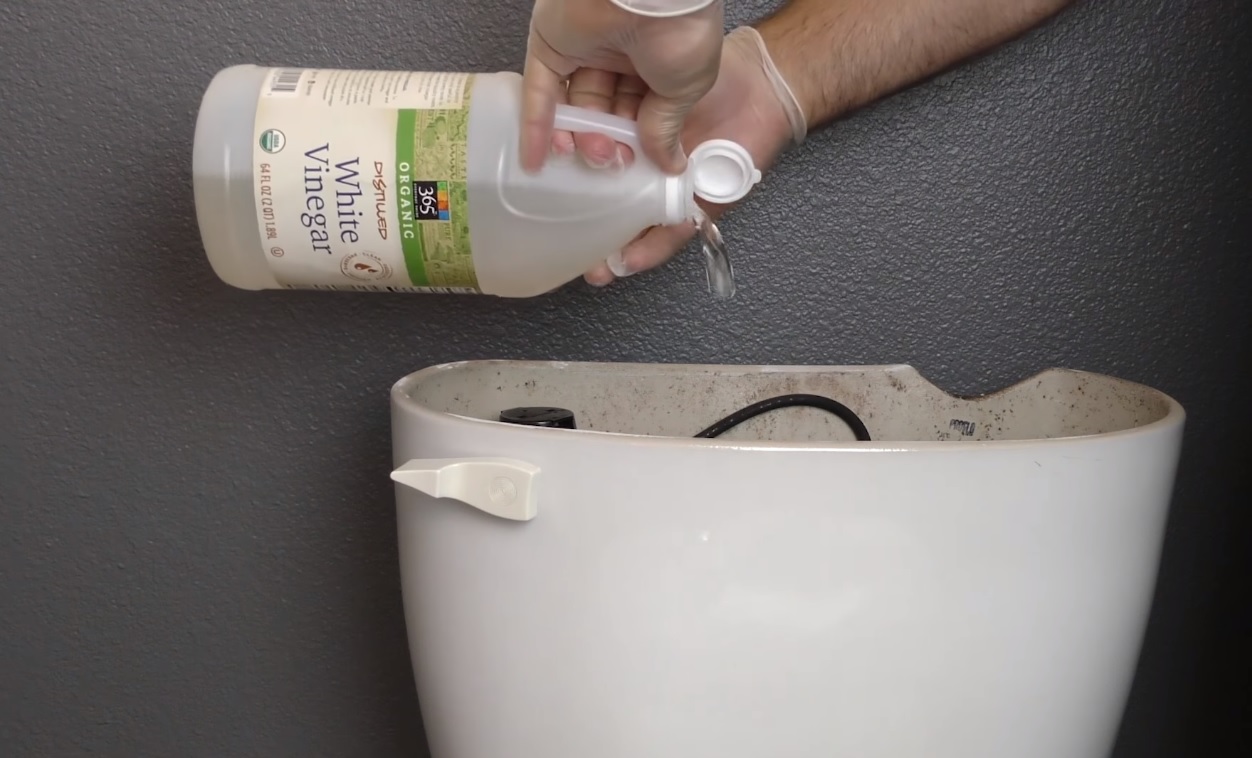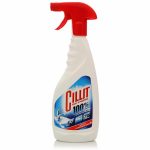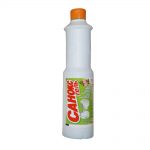How to remove rust from the toilet at home
Over time, an unsightly coating in the form of rust may appear on the surface of the toilet. In most cases, you can wash it yourself. What should be used to achieve the best result and what precautions to take at the same time, we will tell you below.

How does the drip appear
The main reason for the appearance of rust on the inner surface of the toilet is poor-quality tap water, which gets dirty in old metal pipes that are subject to corrosion. Rust is an indispensable companion of any metal, especially one that is often in contact with water.

Therefore, even if the internal wiring in the room is carried out with modern plastic materials, metal pipes continue to be used in the city water supply system, which pollute our plumbing.

First of all, it must be remembered that pollution most often appears on plumbing, which is rarely washed off and dirty water has time to linger on the faience surface.

Therefore, the best tool for removing smudges from a toilet bowl is to prevent and clean the surface from dirt when it first appears. Well, if the optimal moment to eliminate the problem is still missed, you can use the cleaning methods suggested below.
Rust removal features
The main features that must be considered before starting work to remove smudges include:
- Maximum care when working with the glossy surface of the toilet. The use of too harsh cleaning agents and tools can lead to a violation of the integrity of the surface of the faience, and dirt can begin to be deposited even more intensively.
- Better warning than cleaning. We will repeat the advice given earlier - at the first traces of rust, you should start cleaning it, because old and voluminous contamination can be much more difficult to remove.
- Cleaning is carried out on a previously dried surface. The presence of water reduces the intensity of exposure to both mechanical and chemical compounds.

Note! When carrying out such work, it is imperative to use hand protection - rubber gloves.
Firstly, many chemical compounds can quite aggressively affect the skin, and secondly, the microbiological composition of water from the toilet bowl can also have a negative effect, causing irritation and even inflammation of open areas of the body when it comes into contact with them.

Special means
Ready-made cleaning chemicals can be purchased at almost any hardware store.
Note! Carefully study the instructions for such products, some of them can only be used to remove urinary stones and are ineffective for rust.

Alkaline
These formulations work well with light to medium soiling. Among the most affordable are Cif, Cilit, Domestos. Any such composition must be applied to the surface of the toilet in the place of contamination and left for a while for the best effect. In most cases, after soaking, it is enough to drain the water from the tank and unwanted contamination will go away by itself.
Acidic
Such products contain strong acids in their composition, which help to cope with even the most chronic stain. The most popular formulations are Sanfor, Sanox, Cilit Bang. Such formulations are most often complex and allow you to get rid of not only rust, but also from limescale or urinary stones. Due to their aggressive composition, they begin their effect within 10-15 minutes after application.
Note! When using such products, it is necessary to adhere to increased safety requirements, not allowing them to fall on open areas of the body or inhale the solution.
Folk remedies
Folk recipes are no less effective in cleaning the toilet, their use in many cases is safer than removing rust from the toilet with professional chemistry.

Vinegar
This is the most popular folk toilet cleaning solution. In its pure form, vinegar does an excellent job of removing smudges. To do this, it must be applied to a dry surface with contamination and left for 10 minutes or more. It is possible to determine the beginning of the action of the agent visually - when the contamination "floated", it is possible to flush it. If the result was not achieved the first time, you can repeat the above procedure.

Note! Cleaning with vinegar more than twice in a row is not recommended due to the possible risk of damage to the glossy surface.
Alcohol
Alcohol can only remove shallow contaminants, it is more effective for prevention than for thorough cleaning of the toilet. Also, due to the high volatility, a much higher amount of alcohol may be required compared to other methods.

Ammonia
The cleaning result can be enhanced by adding hydrogen peroxide to the ammonia. Both of these substances are readily available in pharmacies. The working solution is obtained from the ratio of 1 part of ammonia to 20 parts of peroxide, applied to a sponge and rust is removed. In most cases, ammonia copes perfectly with small and did not have time to grow old.

Oxalic acid
Oxalic acid is used in powder form. It is applied and left in this form for an hour. Then you need to wipe off the dirt with a sponge, rinsing off the residue with water. When using this acid, be careful not to inhale the vapors or get the product on the skin.

Hydrochloric acid
The most aggressive and dangerous, but at the same time the most effective rust remover. It copes with even the most chronic divorces in 5-10 minutes. However, when working with this acid, it is necessary to protect not only the hands, but also the eyes and respiratory organs.

Toothpaste
Paste in the case of slight contamination allows you to quickly eliminate it. We apply it on the rust and leave it for 30-50 minutes, after which we thoroughly process the surface with a soft metal sponge and wash off the remnants of the product.

Lemon acid
Quite an effective acid that destroys not only rust, but also urinary stone and lime from the surface of faience. The best result can be achieved by first leaving the acid on the surface of the contamination for a while. Then we process it with a sponge and rinse it off.

Carbonated drinks
The use of the most common soda is justified with light pollution. It is important that the drink contains phosphoric acid, which allows cleaning. We wash the toilet with soda, leave for 30-40 minutes, rinse. Lime deposits can also be removed along with the rust.

Preventing rust
As mentioned earlier, rust in the toilet bowl is perfectly removed in its embryonic form at the first signs of appearance, therefore, if you use one of the previously proposed gentle means, such as a special gel, or one of the many previously offered folk remedies, for cleaning in time.

How to clean the toilet from other contaminants
Urinary calculus and lime are well removed with acids, you can choose the most suitable one to get rid of rust in the toilet bowl and other unwanted deposits. First of all, when choosing the most suitable product, it is necessary to take into account the nature of the contamination. For small areas, treatment with vinegar or even soda is suitable; to solve more serious problems, you cannot do without special agents and aggressive acids.

Toilet bowl care rules
To prevent rust, it is recommended to clean it with special agents at least twice a month. If the question is how to clean the inside of the toilet tank from rust, you can safely use even the most aggressive composition, because the inside of the tank does not have a glossy surface, and when flushed, the working solution will additionally clean the faience surface.

By following the simple but rather effective advice from this article, you can not only prevent, but also prevent, if necessary, the appearance of dirt on the surface of the toilet.
Video: a quick way to clean the toilet bowl from rust











Discussions
Good article. I am looking for a company that provides vacuum cleaner services.